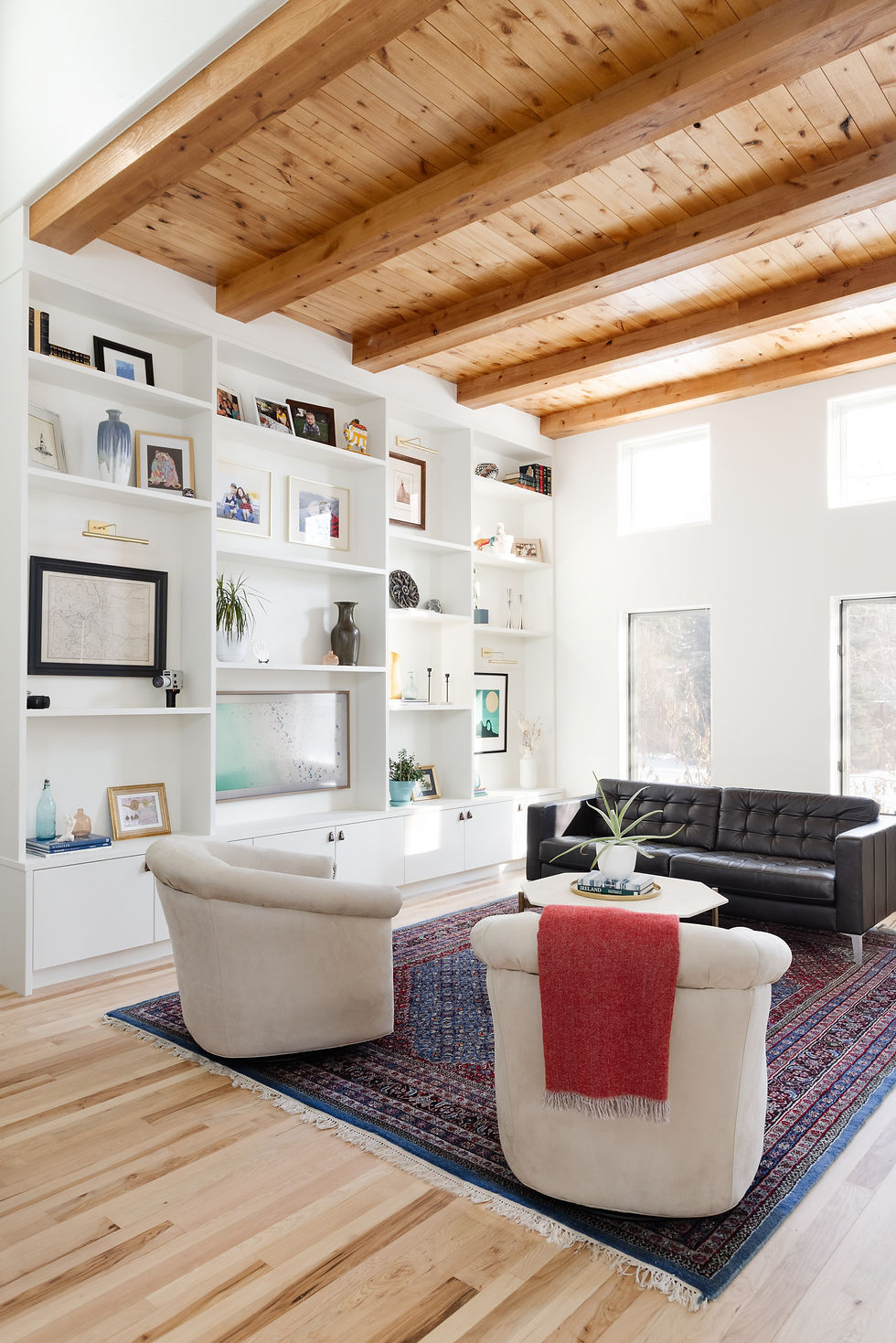Maximizing Small Spaces: Functionality, Color, and Organization
- Form Studio
- Jan 9, 2024
- 3 min read
Living in a small space doesn't mean sacrificing style, comfort, or functionality. In fact, with a strategic approach, you can transform your compact abode into a cozy haven that meets all your needs. Let's explore three key elements to make the most of your limited space: functionality, the power of paint, and the importance of organization.
Embrace Functionality: The Heart of Small Space Living
When every square foot counts, functionality becomes paramount. Start by evaluating your daily routines and identifying your specific needs. Invest in multi-functional furniture that serves dual purposes—think storage ottomans, sofa beds, or wall-mounted desks. Choose pieces that offer hidden storage to keep clutter at bay. The key is to make every item in your space work for you.
Consider furniture with legs to create a sense of openness. Opt for transparent or light-colored furniture that visually takes up less space. Nesting tables and foldable chairs are lifesavers when you need extra surface area but can be tucked away when not in use. By focusing on functionality, you'll create a space that not only looks good but also serves you well in your daily activities.

Harness the Power of Paint: Expanding or Cozying Up
Paint is a transformative tool that can significantly impact the perception of space. When dealing with a small room, the traditional advice has been to stick with light colors to create an illusion of openness. While this is a valid approach, there's room for creativity.
Light Colors
Light and neutral tones like whites, creams, and soft grays reflect light, making a room feel more spacious. They create an airy atmosphere and serve as a versatile backdrop for furniture and decor.
Dark Colors
Surprisingly, darker colors can also be your ally in small spaces. Deep blues, charcoal grays, or rich jewel tones can add a sense of intimacy and coziness. When used strategically, darker colors can create a cocoon-like effect, making your small space feel inviting and warm.
Accent Walls
If committing to an entirely dark room feels daunting, consider an accent wall. A bold color or a textured wallpaper on one wall can add depth and interest without overwhelming the space.

Cultivate Order: The Art of Organization
In a small space, organization is not just a luxury; it's a necessity. Without proper organization, clutter can quickly take over, making the room feel chaotic and overwhelming. Here are some tips to keep your small space in order:
Small spaces require a disciplined approach to belongings. Regularly assess your possessions and declutter. Donate or sell items you no longer need to create more breathing space.
Vertical Storage
Utilize vertical space for storage by installing shelves or wall-mounted cabinets. This not only maximizes storage capacity but also draws the eye upward, creating the illusion of height.
Multipurpose Furniture
Opt for furniture that serves multiple functions. A coffee table with storage, a bed with drawers underneath, or a sofa that can double as a guest bed—all contribute to efficient use of space.
Baskets, bins, and storage boxes are your allies in keeping things organized. Labeling these containers adds an extra layer of order and makes it easier to locate items when needed.
Making the most of a small space is a creative challenge that, when approached strategically, can yield a stylish and functional home. Prioritize functionality, experiment with paint to play with perceptions of space, and commit to staying organized. By embracing these principles, you'll not only optimize your small space but also create a comfortable and inviting environment that reflects your personal style. Small can indeed be beautiful and highly efficient with the right approach.
Need help with turning your small space into something extraordinary? Reach out today and let's make good changes in your home!





Comments